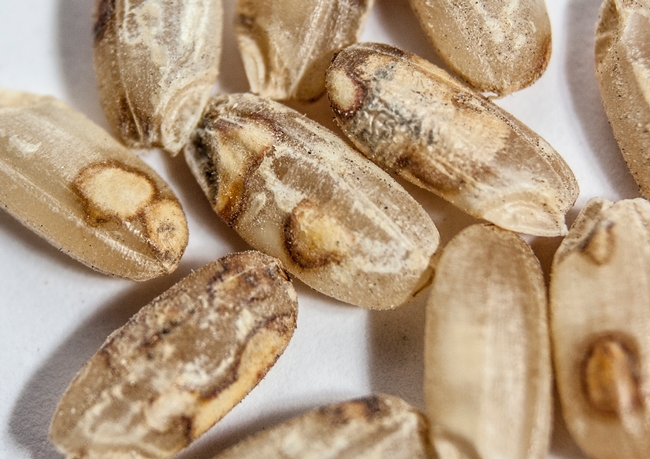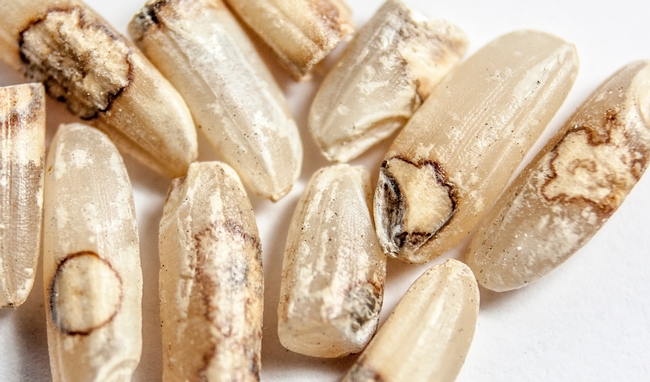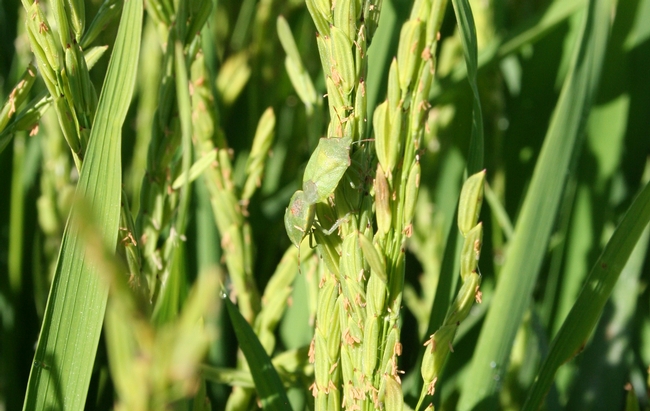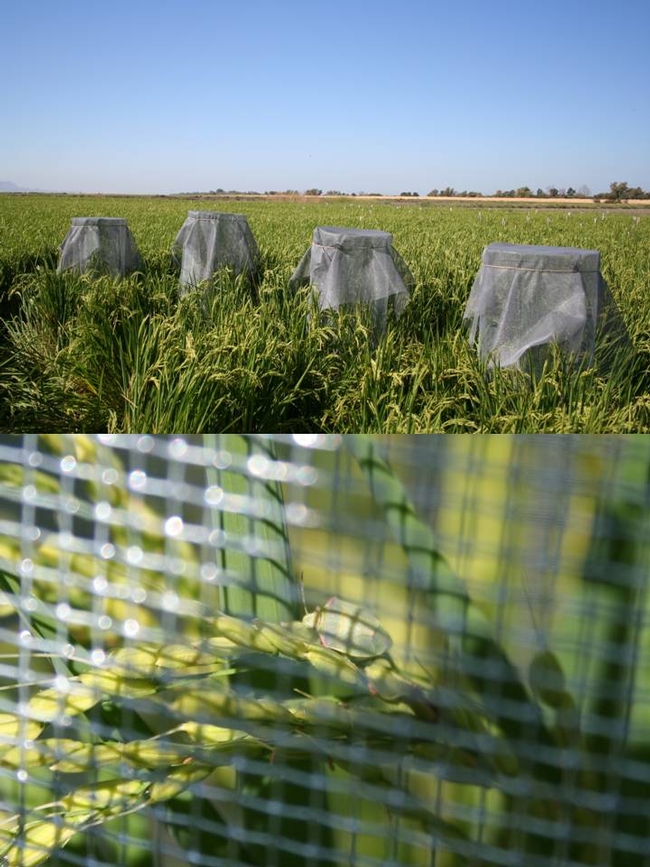Every year for the past 3 or 4 years I've been hearing of rice that is graded No. 2 because of "peck". It's always been just a few isolated cases, except in 2011 when we had some early rains during harvest. The free water on the surface of the the grains may allow fungi to grow and stain the kernel. Here's what water staining looks like:
Pecky kernels are damaged kernels that have one or more black, brown, red, or other discolored spots or areas on them caused by fungus growth or insects. In the southern rice producing states, the occurrence of peck is common because of the rice stink bug. This insect feeds on developing grains and causes peck. Here's what typical rice stink bug injury looks like:
The rice stink bug is not present in California. Some of the pecky rice reported from California could be just kernels that have been damaged by water (I suspect that rice that lodges while the field is still flooded is susceptible to discoloration). In the end, when making the grade determination, it doesn't matter if the discoloration was caused by insects or water, discolored kernels are all classified as "damaged kernels".
However, in some cases, water damage can be ruled out and the reason for the peck is unknown. In trying to solve this mystery, Larry Godfrey, UC Davis Extension Entomologist, and I sampled a field last year where peck had been reported before. We found a couple of redshouldered stink bugs (Thyanta spp.). I also collected this bug from rice in Glenn and Yolo counties. Even though we found just a few bugs, we wondered if this stink bug could cause peck. There is a 2007 report from Mississippi that claims this stink bug causes damage in rice. Here's what the redshouldered stink bug looks like:
We are currently doing some experiments with the redshouldered stink bug. We collected some of these bugs from weeds and infested panicle and whole plant cages. So far, it seems that these bugs can feed and survive on rice. After harvest we will be able to tell if the redshouldered stink bug is capable of causing peck. I will update after harvest.
In the meantime, if your rice is graded No. 2, and peck or damaged kernels seem to be the reason, let me know (laespino@ucanr.edu; 530-635-6234).



